Head voltage in lances
Federal Agency for Education of the Russian Federation
Kurchativska filiya
Kursk State Polytechnic College
discipline: "Electrical Engineering"
on the topic: "Electric lances of a snake strum"
Viconav robot:
Asєєv Evgen Sergiyovich
2nd year student
"Nuclear stations and installations"
Revised: Gorlov O.M.
Kurchatov
Entry
The principle of taking away the change of EPC. Chinne value of struma and voltage
Vector diagram method
Lance of a changeable strum with an active support and inductance
Lantsyug zminny strumu with different interests
Last lansyug what to revenge active opir, inductance and capacitance
Resonance voltage and strum
Conductivity and rozrahunok of electric lances
Entry
Until the end of the 19th century, victors were less than dzherel fast strumu– chemical elements and generators. Tse intermedium feasibility of transmission of electrical energy is great in the country. As you can see, in order to change the costs at power lines, it is necessary to high voltage. However, it is impossible to take a high voltage from the generator of a steady stream. The problem of transmission of electrical energy to the great power stations was solved only for the replacement of the wind turbine and transformers.
1. The principle of removing the replacement EPC
The replacement strum has a number of advantages in the case of the replacement strum: the generator of the replacement strum is significantly simpler and cheaper than the generator of the constant strum; change strum can be transformed; the changing strum is easily transformed into a permanent one; moving the lasting struma is much simpler and cheaper, lower moving the permanent struma.
In principle, a changeable strum can be called a strum, which changes its value from time to time, but in technology, such a strum is called a changeable strum, periodically changing its magnitude directly. Moreover, the average value of the strength of such a struma for the period T is equal to zero. Periodic change strum is called the one that through the intervals of the hour T, which characterizes yoga physical quantities swell the same values.
The electrical engineering of the largest width has a sinusoidal alternating stream, tobto. strum, the value of which changes according to the law of sine (or cosine), which can be low in comparison with smaller periodic strums.
A replacement stream of industrial frequency is obtained at power plants for an auxiliary generator of a replacement stream (three-phase synchronous generators). All folding electric machines, we can only look at the physical foundations of their business, that is. the idea of taking away the snake strum.
In a homogeneous magnetic field, a permanent magnet is evenly wrapped around a frame with an area of S. (Fig. 1).
Magnetic flux through the frame is more expensive:
Ф=BS cosα (1.1)
de α – cut between the normal to the frame n і by the vector of magnetic induction B. If the edges are equal when wrapping the frame ω= α/t, then the cut α will change according to the law α= ω t and formula (1.1) will look:
Ф=BScosωt (1.2)
Scattered with a wrapped frame, the magnetic flux, which is changing, changes all the time, then EPC induction E will be induced in it according to the law of electromagnetic induction:
E \u003d -dФ / dt \u003d BSωsinωt \u003d E0sinωt (1.3)
de E0 \u003d BSω - the amplitude of the sinusoidal EPC. In this way, the frame has a sinusoidal EPC, and if you close the frame to the tension, then a sinusoidal stream will flow in the lance.
The value ωt \u003d 2πt / T \u003d 2πft, which stands under the sign of the sine or cosine, is called the phase of coliving, which is described by these functions. The phase determines the value of the EPC, whether it be at the hour t. The phase is reduced in degrees or radians.
Hour T of one new change of EPC (the whole hour of one turn of the frame) is called the EPC period. Changing the EPC hourly can be depicted on the hourly diagram (Fig. 2).
The value, the turnaround period, is called the frequency f = 1/T. If the period is reduced in seconds, then the frequency of the zminny struma is reduced in Hertz. In most countries, including Russia, the industrial frequency of the strum is 50 Hz (in the USA and Japan - 60 Hz).
The value of the industrial frequency of the strumum is determined by technical and economic streaks. If it is too low, then the dimensions increase electrical machines i, otzhe, vitrate materials їх prepared; Let's remember a flock of blinking light in electric light bulbs. At overly high frequencies, energy is wasted in the cores of electrical machines and transformers. Therefore, the most optimal frequencies were 50 - 60 Hz. However, in some vipadkas there are alternating strumas, both with a higher and lower frequency. For example, in aircraft, the frequency of 400 Hz is fixed. At this frequency, it is possible to significantly change the dimensions and the shaft of the transformers and electric motors, which is more important for aviation, lowering the losses in the cores. On the bays vikoristovuyut change strum with a frequency of 25 Hz and navit 16.66 Hz.
Dyuchі value of struma and voltage
In order to describe the parameters of the changing strum, it is necessary to select the same physical quantities. Mitteve and amplitude values for these purposes are inconsistent, and the average value for the period is equal to zero. That is why it is necessary to introduce the understanding of the fluctuating values of the struma and the voltage. The stench is based on a thermal dielectric stream, so you can’t lie down in the direct line.
The fluctuating values of the struma and the voltage are called the vital parameters of such a steady struma, when this guide for this interlude hour, you can see the layers of warmth, which and when streak. We know the correlation between fluctuating and amplitude values.
In the active support R for the constant strum I for the period of the constant strum T, according to the Joule-Lenz law, such an amount of heat is seen:
With a change in stream i in the same support R for an infinitely small interval of an hour dt, such an amount of warmth is seen:
dQ = i Rdt (1.5)
de mitteve the value of the struma i is determined by the formula:
i = I0sinωt (1.6)
This is the warmth that is seen as a change in the stream over the period T more:
![]()
The integral (1.7) is calculated as follows:

The other integral is equal to zero, the shards of the integral are in the form of a periodic function for the period. Equating, zgіdno z designations (1.4) and (1.8), we take:

In this order, the order of significance of the snake struma is √2 times less than that amplitude value. Similarly, the dynamic values of the voltage and EPC are calculated:
U = U0/√2; E = E0/√2 (1.10)
The meanings that are due are indicated by great Latin letters without indexes.
2. Method of vector diagrams
The method of vector diagrams is an image of quantities that characterize the changing stream by vectors, and not by trigonometric functions, and it is supra-symmetric.
The changing strum, on the face of the constant, is characterized by two scalar quantities - amplitude and phase. Therefore, for the mathematical description of the snake strum, a mathematical object is necessary, which is also characterized by two scalar quantities. There are two such mathematical objects - a vector on the plane and a complex number. Theoretically, electric lances and tі y іnshі vikoristovuyutsya for the description of the change strums.
When describing the electric lance of the strum for additional vector diagrams for the skin strum and the voltage, a vector is set on the plane in polar coordinates, the average of which is the amplitude of the strum or the voltage, and the polar kut is the normal phase. Scatters of the phase of the zminny struma lie at an hour, then it is important that all vectors turn around the opposite arrow from the frequency of the zminny struma. The vector diagram will be for a fixed hour.
More details on the choice of vector diagrams will be posted below on the butts of specific kіl.
3. Lance of a changeable strum with an active support and inductance
Let's look at the lance (Fig. 3), in Yakomu, an active support (resistor) is applied sinusoidal voltage:
U(t) = U0sin ωt (1.11)
Todi following Ohm's law strum u lantsyugu dorіvnyuvatime:
I (t) = U (t) / R = U0sin ωt/R = I0 sin ωt (1.12)
Mi, strum and voltage are shifting in phase. The vector diagram for this lancet is pointed at little 4:
Surely, as the hour changes, the tension of the lance of the changeable struma with a resistor changes with the hour. Mitteve value of tension is more expensive to increase the value of stress and voltage:
p (t) = i(t)u(t) = I0 U0 sin ωt = I0 U0(1-cos2 ωt)/2 (1.13)
Z tsієї formula bachimo, scho mitteva tightness is always positive and pulses with a double frequency (Fig. 5):
Tse means that electrical energy is irrevocably transformed into heat directly from the stream in the lance.
Calculate the average value of tension for the period:
Pav = 1/T ∫ p(t)dt = I0U0/2T ∫ dt − I0U0/2T ∫ cos2ωt dt = (I0U0/2T) ∙T = IU = I R
oskіlki other іntegrа dоrіvnyuє zero аkіn іntegrаl іnіd іdеrіnoїї ї ї y period.
Mi Bachimo, scho in lansy with a resistor all the electrical energy is irreversibly converted into thermal energy. Those elements of the lansyug, in which there is an irreversible transformation of electrical energy into other types of energy (in heat), are called active supports. Therefore, the resistor is an active support.
Let's take a look at the lance (Fig. 6), in which, before the coil of inductance L, which does not have an active support (R = 0), a sinusoidal voltage is applied (1.11):
The changeable strum, which flows through the coil, creates a self-induction eL in the EPC. Similar to another Kirchhoff rule, we can write:
U + eL = 0 (1.15)
Vіdpovidno to Faraday's law, EPC self-induction is more expensive:
eL = −LdI/dt (1.16)
Substituting (1.16) for (1.15), we can:
dI/dt = − eL/L = U/L = U0 sin ωt/L (1.17)
Integrating the price, we take into account:
I = − U0cos ωt/ω L + const = U0sin (ωt − π/2)/ ωL+ const (1.18)
de const - post_yna іtegruvannya, how to talk about those who in lancius can have a post_yny strum. For the presence of a fast struma, it is worth zero. For the presence of a fast struma, it is worth zero. Remaining maєmo:
I = I0 sin (ωt − π/2) (1.19)
de I0 = U0/ωL. Dealing with insults by √2, we take:
I = U / ω L = U / XL (1.20)
The spin (1.20) is Ohm's law for the Lantzug with ideal inductance, and the value XL = ωL is called the inductive support.
From the formulas (1.19) we can see that in the case of a lancet lancet, the strum is in phase with the voltage at π/2. The vector diagram of the thogo lanceug shows a little 7.
Let's calculate the tension, spozhivanu lanzug іz suto іnductivny support.
Mitta's tension dorivnyuє:
p (t)= I0 U0 sin ωt(ωt − π/2)= − I0 U0 sin2 ωt/2 (1.21)
Mi, it changes according to the law of the sine with a double frequency (Fig. 8).
Positive values of tension indicate a decrease in energy by the coil, and negative values - turn the reserve energy back to the dzherel.
The average for the period of fatigue is more:
Pav = 1/T ∫ p(t)dt = (− I0 U0 /2T) ∫ sin2 ωt dt = 0 (1.22)
Mi Bachimo, scho lance with inductive tension does not slow down - it is more reactive.
5. Lansyug of a snake strum with different interests
Lance of a snake strum with active-inductive inputs
Look at electric lanceug(Fig. 9), in a way through the coil of inductance L, which can have an active support R, a changing stream flows:
I = I0 sin ωt (1.23)
The voltage applied to the lance, more vector sum of the voltage drops on the inductance coil and on the resistor:
U = UL+UR (1.24)
The voltage on the resistor, as shown above, changes in phase with the strum:
UR = U0R sin ωt (1.25)
and the voltage on the inductance is one EPC of self-induction with a minus sign (following another Kirchhoff rule):
UL = L(dI/dt)= I0 ωLcos ωt = U0Lsin(ωt + π/2) (1.26)
de U0L = I0 ωL (1.27)
The voltage on the inductance viperedzhaє strum on π/2. Passing to the formula (1.27) to the inflated values of the strum (I = I0/√2; U= U0/√2), we take:
I = UL/XL (1.28)
Tse Ohm's law for Lanziug with ideal inductance (that is not an active support), and the value XL \u003d ωL is called an inductive support. After inducing the vectors I, UR and UL and speeding up by formula (1.24), we know the vector U.
U=√UR+UL=√IR+I(ωL)=I√R+(ωL)=IZ(1.29)
de value
Z = √R+(ωL) (1.30)
Zsv in phase between the strum and the pressure is also vector diagrams:
tg φ = UL/ UR = ωL/ R (1.31)
In this region, the zvu phases between the strum and the spring lie in the value of R and L and change no more than 0 to π/2.
Now let's look at how the year is changing the tightness of the lancet with active-inductive tendencies. Mittevy the meaning of the struma and the voltage can be represented by looking at:
U(t) = U0 sin ωt (1.32)
I(t) = I0 sin(ωt − φ)
p(t)= I(t) U(t) = I0 U0 sin ωt sin(ωt − φ)=(I0 U0/2) = =(I0 U0/2)(1− cos2ωt) cosφ − (I0 U0/ 2) sin2ωt sin φ (1.33)
Mitteve meaning of tension can be two warehouses: the first one is active, and the other one is reactive (inductive). Therefore, the average for the period of tension is not equal to zero:
Pav = 1/T ∫ pdt = (I0 U0/2T) cosφ ∫dt − (I0 U0/2T) cosφ ∫ cos2ωt dt −
−(I0 U0/2T) sin φ ∫ sin2ωt dt = (I0 U0/2) cosφ (1.34)
Lantsyug zminny strumu with єmnistyu
We can see the electric lance, at yaku changing voltage(1.11) is applied up to capacity Z (Fig. 11). Mitteve the value of the struma in the lance with the possibility of increasing the speed of the charge on the capacitor plates:
I = dq/dt (1.35)
Prote, because q = CU, then
I = C (dU/dt) = ωCU0 cos ωt = I0 sin (ωt + π/2) (1.36)
ωCU0 = I0 (1.37)
In this lance, the strum vies the voltage by π/2. Passing from the formula (1.37) to the inflated values of the strum (I = I0/√2; U= U0/√2), we take:
I0 = U/Xc (1.38)
Tse Ohm's law for the lancet of the zminny strumu with єmnistyu, and the value
Xc= 1/ωC is called an imaginary support. The vector diagram for the th lance is shown in fig. 12.
We know the mittev and the middle tightness of the lansyug, to avenge the memory. Mitteva the pain is dear:
p(t)= i(t) u(t) = I0U0 sin (ωt + π/2) sin ωt = IUsin2 ωt (1.39)
Mitteva tension changes with a double frequency (Fig. 13). With any positive value of tension, the charge of the capacitor is indicated, and the negative value is the same as the turn of the stored energy in the dzherelo. The average for the period of tension here is equal to zero
Pav = 1/T ∫ p(t)dt = IU/T ∫ sin2 ωt dt = 0 (1.40)
because in the case with a capacitor, the pressure is active, it does not slow down, but the exchange of electrical energy between the capacitor and the dzherel passes.
Lansyug of a snake strum with active-switching vanishings
The real lance of the changeable strum is supposed to replace the active opir - opir wire, actively spend at the condenser thinly. Let's take a look at the real lance, which is made up of a sequentially connected capacitor and an active support R (Fig. 14). The strum runs through this lance I = I0 sin ωt.
According to another Kirchhoff rule, the amount of voltage on the resistors and on the capacity is equal to the applied voltage:
U = UR + UC (1.41)
The voltage on the resistor varies in phase with the strum:
UR = U0R sin ωt (1.42)
and the voltage on the capacitors is in the stream:
UC = U0C sin (ωt − π/2) (1.43)
After inducing the vectors I, UR and UC i, scaling by formula (1.41), we know the vector U. The vector diagram for the first lancet is shown in small 15.
As can be seen from the vector diagrams, the modulus of the vector U is more
U = UR + UC = √ I R + I (1/ωC) = I √ R + (1/ωC) = IZ1 (1.44)
de value
Z1=√R + (1/ωC) (1.45)
called the top support of the lancer.
Zsv in phase between strum and voltage in this lance also depends on vector diagrams:
tg φ = UC/ UR = (1/ωC)/ R (1.46)
In the case of a well-glanced lance, the phases between the strum and the spring lie in the spring, and the value of R and C changes in the ranges from 0 to π/2.
Now let's look at how the yearning is changing the tightness of the lancer with the active - Imnist ambitions. Mittevy the meaning of the struma and the voltage can be represented by looking at:
U(t) = U0 sin ωt
I(t) = I0 sin(ωt+φ) (1.47)
Todi mittve the meaning of tightness is more:
p(t)= I(t) U(t) = I0 U0 sin ωt sin(ωt + φ)=(I0 U0/2) = =(I0 U0/2)(1−cos2ωt) cosφ + (I0 U0/ 2) sin2ωt sin φ (1.48)
Mitteve meaning of tension can be two warehouses: the first one is active, and the other one is reactive (emnist). Therefore, the average for the period of tension is not equal to zero:
Pav =1/T ∫ pdt = I0U0/2T cosφ ∫ dt − I0U0/2T cosφ ∫ cos2 ωtdt + I0U0/2T ∙
sin φ ∫ sin2ωt dt = I0U0/2T cosφ (1.49)
and that is active sweating. In this exhaustion, electrical energy is converted to the active support R heat.
6. The last lance, which avenges the active opir, inductance and capacitance
Now let's look at the lance of the strum, which is to avenge the inductance, the capacity and the resistor, switched on in series (Fig. 16).
The voltage applied to the lance, more vector sum of the voltage drops on the inductance coil, on the capacitance and on the resistor:
U = UL + UC + UR (1.50)
The voltage on the resistors is changed in phase with the strum, the voltage on the coil is driven by the strum in phase by π/2, and the voltage in the capacitance is in phase with the strum by π/2. You can write down the voltage values for such a look:
UR = U0R sin ωt = I0R sin ωt
UL = U0Lsin (ωt + π/2) = I0 ωL (ωt + π/2) (1.51)
UC = U0C sin (ωt − π/2) = (I0/ωC) sin (ωt − π/2)
If we know the amplitude of the phase of these vectors, we can induce the vector diagram and know the vector U (Fig. 17)
From the taken vector diagrams, we can know the modulus of the vector applied to the lance of the stress U і zsv phase φ between the strum and the voltage:
U = √ UR + (UL − UC) = I √ R +(ωL− 1/ωC) = IZ (1.52)
Z = √R+(ωL−1/ωC) (1.53)
called the top support of the lancer. It can be seen from the diagrams that the sound phase between the strum and the elastic is equal to:
tg φ =(UL − UC)/UR = (ωL− 1/ωC)/R (1.54)
As a result, using the diagrams, we took away the voltage tricot, the hypotenuse of which is equal to the applied voltage U. With which phase difference between the strum and the voltage, it is related to the vector correlations UL, UC and UR. At UL > UC (fig. 17) φ є positive and bias may be inductive. At UL< UC угол φ отрицателен и нагрузка имеет емкостный характер (рис. 18, а). А при
UL = UC cut φ is equal to zero and the vanishing is purely active (Fig. 18, b).
Dividing the sides of the tricot of the tension (Fig. 17) to the value of the struma in the lance, we take the tricot of the supports (Fig. 19, a), in which R is the active opir, Z is the last opir, and x \u003d xL−xC ─ reactive opir. Cream of that
R = Zcosφ; x = Zsinφ (1.55)
Multiplying the sides of the tricot tension by the value of the struma in the lance, we take away the tricot tension (Fig. 19, b). Here S is full tension, Q is reactive tension and P is active tension. From trikutnik of tightness weeping:
S = IU = √P + Q; Q = Ssin φ; P = S cos φ = IU cos φ (1.56)
Reactive pressure Q zavzhdi pov'yazana with the exchange of electrical energy between the dzherel and the gentleman. Її vimіryuyut at volt - reactive amperes (Var).
Povna potuzhnіst S vengeance as active, and reactive warehouse - tse potuzhnіst, yak dzherel elektroenergetija. At P = 0, all total tension becomes reactive, and after Q = 0, it becomes active. Father, warehouse again vyznachayutsya character navantazhennya. The pressure is reduced by volt-amperes (VA). This value is indicated on the plates when attaching a strum.
The active tension P is connected with this electrical energy, as it can be converted to another type of energy - heat, mechanical work only. Vaughn vanquishes at Watts (W). Active pressure to lie in the struma, tension and cos φ. When the kuta is increased, cos and tension P changes, and when the kuta is changed, the tension P increases is active. In this manner, cos φ shows that part of the total tension can theoretically be converted to other types of energy. cos φ is called the tension coefficient.
For a rational victorious tension of the strum, vomited by the dzherels of electric energy, it is necessary to create such an effort, so that cos φ in lancius is close to one. In practice, on the scale of the enterprise, it is important to achieve it with a good indicator є cos = 0.9 - 0.95.
At low values of cos, additional expenses for heating the conductor are blamed.
It is assumed that the same active strains are transmitted with the same tension up to two equal tensions from cos φ0 =1 and cos φ1<1. Тогда
I0U cos φ0 = I1U cos φ1 (1.57)
I1 = I0/cos φ1 (1.58)
Exhaustion, which is stained on the heating of wires, is more expensive
P1 = I1 R = I0 R / cos φ1 (1.59)
That spent on heating the darts is wrapped in proportion to the square of the coefficient of tension. So and may be, to that the reactive pressure creates an additional jet stream near the wires, and spend on heating the wires in proportion to the square of the stream. Therefore, the promotion cos may be of great practical importance.
7. Resonance of voltages and strums
Resonance voltage
If the voltages on the inductance and capacitance UL and UC are mutually connected in phase by 180 equals, for the magnitude, then the stench will compensate for one another (Fig. 18, b). The voltage applied to the lancet, is more stress on the active support, and the strum at the lancet moves in phase with the voltage. This vibration is called the resonance of the voltage.
To the mind resonance, the voltage is equal to the voltage on the inductance and capacitance, or the equalness of the inductive and terminal bearings of the lance:
xL = xC or ωL = 1/ωC (1.60)
At resonance, the strum at the lanceugu is more
I = U/√R + 0 = U/R (1.61)
Therefore, the lancet in this species may have the least possible opir, but only the active opir R is included in it.
At resonance, the voltages on the reactive supports xL and xC can slightly change the voltage to reach the lance. If we take the setting of the added voltage to the voltage on the inductance (or capacitance), then we take
U/ UL = IZ/I xL = Z/ xL or UL = U xL /R (1.62)
so that the voltage on the inductance will be greater for the applied voltage xL / R times. Tse means that in case of resonance, the voltages on the okremih lances of the lancet can be broken by the voltages, which are not safe for the insulation of the accessories included in the whole lancet. The vector diagram for the vibration resonance of the stress is shown in fig. 18 b.
As in the next lance, in order to compensate for the active opir, inductance and mnistence, change the value of one of the lance's elements (for example, capacitance) with a constant applied pressure, then there will be a change in a lot of values that characterize the lance's strum. The curves that show how the strum changes, the voltage, are called resonant. Resonance curves with a change in capacitance show a baby 20.
Strum resonance
On the front of the last lancets of the strum, de strum, which flows through all the elements of the lances of the same, parallel lances, the same voltage will be applied to the parallel included lances of the lance.
Let's look at the parallel connection of the capacitance and the socket, which is formed from the inductance of the active support (Fig. 21).
Offenses of the needles are known under the same applied voltage U. Let's look at the vector diagram for the first lancet. As the main vector, the vector of the applied force U is viberated (Fig. 22).
Then we know the length of the vector I1
I1 = U/z1 = U/√R1 + xL (1.63)
and we add the vector according to the ratio to the vector U under the cut φ1 which depends on the formula
tg φ1 = xL/R1 (1.64)
Taking away such a rank, the struma vector I1 can be divided into two warehouses: active Ia1 = I1 cos φ1 and reactive Ip1 = I1 sin φ1 (Fig. 22).
The value of the struma vector I2 is known from the
I2 = U/ xC = U/(1/ωC) = ωCU (1.65)
that is the input of the vector under the cut 90 of the counter arrow of the applied vector of the applied voltage U.
The deep strum I is a more geometric sum of the strums I1 and I2 or the geometric sum of the reactive strum Ip1 − I2 = IL − IC and the active strum Iа1. Dozhina vector I dorivnyuє
I = √(IL − IC) +(Ia1) (1.66)
Zsv in phase between the hot strum I and the applied force U can be determined from the spiv
tgφ =(IL − IC)/ Iа1 (1.67)
From the vector diagrams, it can be seen that the dozhina and the position of the vector of the salmon struma lie in the spivvіdnenja between the jet strumas IL and IC. Zocrema, for IL > IC hot strum in phase with applied voltage, at IL< IC ─ опережает его, а при IL = IC ─ совпадает с ним по фазе. Последний случай (IL = IC) называется резонансом токов. При резонансе токов общий ток равен активной составляющей тока в цепи, то есть происходящие в цепи процессы таковы, как будто в ней содержится только активное сопротивление (в этом случае φ = 0 и cos φ = 1). При резонансе общий ток в цепи принимает минимальное значение и становится чисто активным, тогда как jet streams the veins do not reach zero and protilezhnі in phase.
If you change the value of capacitance at a constant applied pressure in a parallel lance, depicted on little 21, then a lot of values will change, which characterize the strum in the lance. The curves, which show how the strum changes, the stresses on the lances of the lancet and the zsv phase between the strum and the voltage, are called resonant.
The theoretical information given below can be correct in preparation for laboratory work 6, 7, 8 in the laboratory "Electricity and Magnetism". For more detailed information, we recommend the assistant of S. G. Kalashnikov "Electricity" (Moscow, "Nauka" -1985), on the basis of which this methodical manual was compiled.
Let's look at the electrical noise, which is to blame for that slump, if there is a generator in the lance, electrical breaking force which is periodically changed. Let us intermingle the wires of electric lances with spherical capacitances and inductances, and we will change the jets of quasi-stationary ones. Quasi-static means that mittevi strum force value i practically the same in all plots of the last stake. Tsya Umov will be vikonan, as if in an hour the signal of the lansyug was passed (  - dozhina lansyuga, c- light swedishness) the strength of the struma changes insignificantly (
- dozhina lansyuga, c- light swedishness) the strength of the struma changes insignificantly (  , de T- The period of colivan). How to accept l= 1 m, then the jets can be considered quasi-stationary at frequencies
, de T- The period of colivan). How to accept l= 1 m, then the jets can be considered quasi-stationary at frequencies  300 MHz.
300 MHz.
We can only look at such streams, as if they change according to the sinusoidal law. Tse explained by kіlkom reasons. In the first place, a lot of technical generators of the zminous stream create EPCs, which change according to the law close to sinusoidal, and the streams that are created by them are practically sinusoidal. In another way, the theory of sinusoidal strums is especially simple, so on the basis of such strums it is easy to explain the main features of electric studs. Thirdly, it is similar to the leading mathematical Four's theorem whether a function  milk infamous looking may be presented in the form of a sum of sinusoidal functions. Therefore, the theory of sinusoidal strum allows us to take important results for the strum, which changes in hours according to a sufficient (non-sinusoidal) law.
milk infamous looking may be presented in the form of a sum of sinusoidal functions. Therefore, the theory of sinusoidal strum allows us to take important results for the strum, which changes in hours according to a sufficient (non-sinusoidal) law.
Nareshti, skrіz, de tse is not specially designated, but it is worth noting that the kolyvannya is installed. In other words, let's say that at the moment the cob of cob kolivan proishov finish the great hour, so amplitude the struma and the voltages have already reached their constant values and do not change far away.
Resistor
We can look at the back of the okremiya vipadok, if the generator of the zminny stream of short circuits on the outer lansyug, that the floorings may have little inductance and capacity, that they can be znehtuvat. It is acceptable that in lancezі є zminny strum
 ,
,
(i- mitteve meanings or struma, 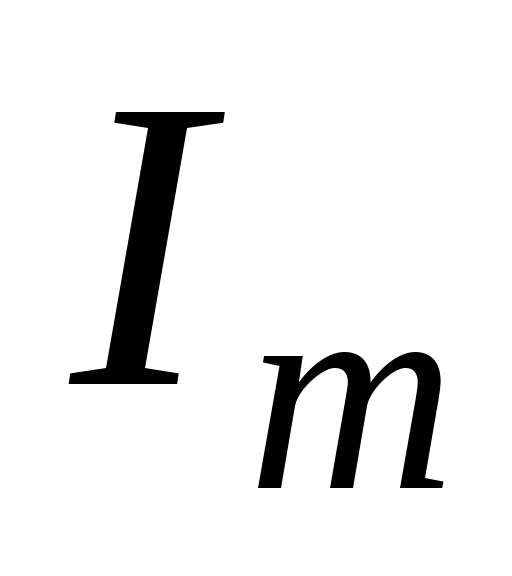 - struma amplitude,
- struma amplitude,  - cyclic frequency) and we know, for some law, the voltage between the lances of the lancer changes aі b
(Fig.1) . Zastosovuchi to the dilyanka aRb
Ohm's law, take
- cyclic frequency) and we know, for some law, the voltage between the lances of the lancer changes aі b
(Fig.1) . Zastosovuchi to the dilyanka aRb
Ohm's law, take
 .
.
In this way, the voltage at the ends of the lancet pit lies at the same time according to the law of cosine, and the phase difference between the strums and the voltage reaches zero (the streaks fluctuate in phase): the voltage and the strum simultaneously reach the maximum values and turn to zero at the same time (Fig. 2) . Maximum voltage value є
 .
.
|
Fig.1. Resistor |
that voltage per hour |
Now let's look at why the robot is worthy, what is being built in Lancius. By stretching a small interval for an hour, the strum can be seen as a constant and to that mitteva the tension of the zminny strum.

Fig.3. Strumu staleness through a resistor, voltage and mitteva tuzhnosti per hour
The change of mitt's tension over time is shown in Fig.3. Immediately given crooked kolivan strum i that voltage u. Sound it is necessary to know not the mittve of the meaning of tightness, like the average value for the great gap of the hour, which hoots a lot of periods of coliving. If it’s possible to right with a periodic process, then re-calculate the average value, obviously, calculate the average value of tension for the last period. The robot of the snake strum in a short hour dtє
 ,
,
oh well, a robot A per hour T expressed by the formula
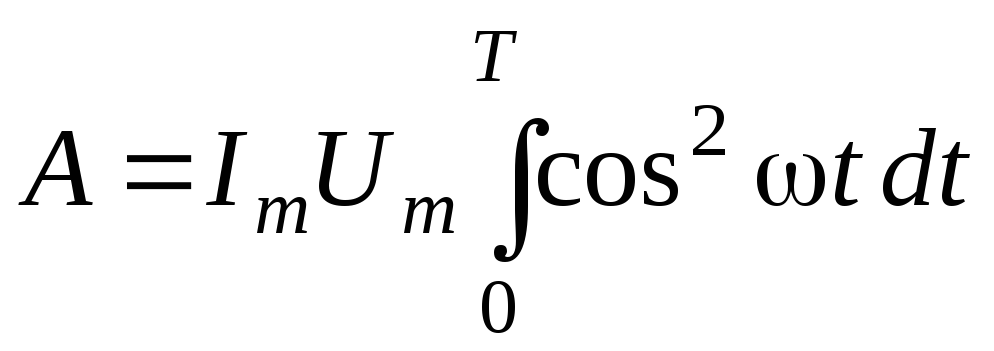 .
.
 .
.
Tom
 .
Stars for moderate tightness are acceptable
.
Stars for moderate tightness are acceptable
 .
.
so yak  , you can also write
, you can also write

 .
.
Significantly through ![]() і
і 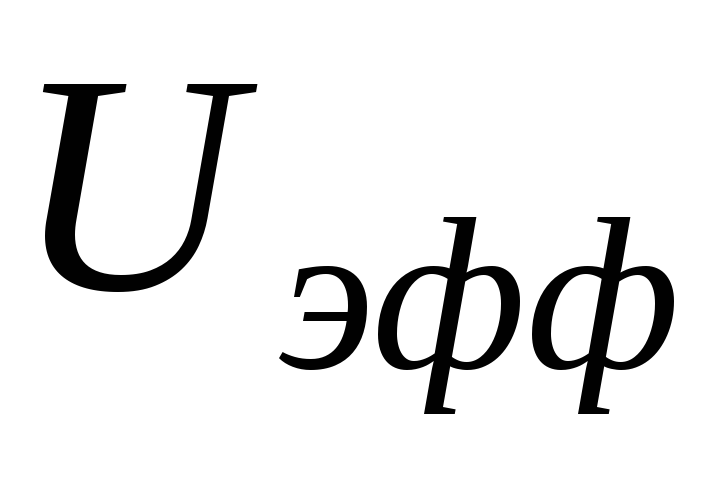 the strength of the struma is the tension of the constant struma, which you see at the support R the same amount of warmth, which is the whole change of strum. Todi
the strength of the struma is the tension of the constant struma, which you see at the support R the same amount of warmth, which is the whole change of strum. Todi
 .
.
Porovnyuyuchi tsі vyslovlyuvannya z virase for tightness of the snake struma, maybe
 .
.
Value ![]() is called the effective (or chinny) value of the power of the strumum, and
is called the effective (or chinny) value of the power of the strumum, and 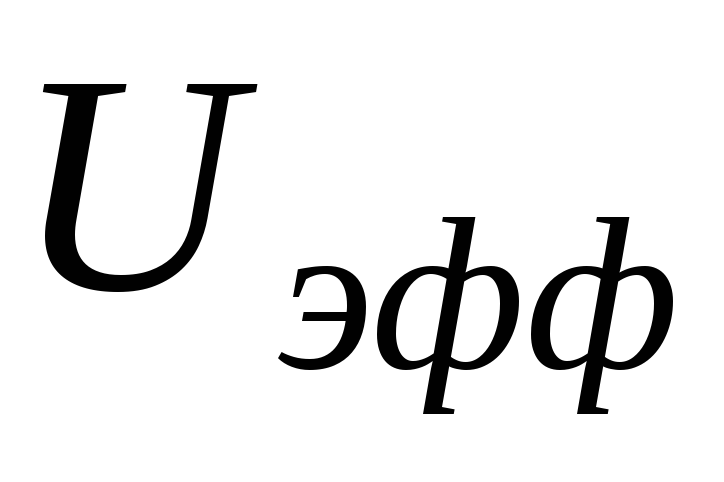 - Effective voltage values. Koristuyuchisya effective values, you can determine the average tightness of the snake struma by these very formulas, like the tightness of the fast struma.
- Effective voltage values. Koristuyuchisya effective values, you can determine the average tightness of the snake struma by these very formulas, like the tightness of the fast struma.
Electric energy may constantly vibrate, expand and settle down like the energy of a serpentine stream.
The wide stowing of the squirt stream in the different galuses of technology is explained by the ease of its transformation, as well as by the simplicity of the power of the generator and the engine of the zminny strum, the reliability of its operation.
Changing strum, changing its meaning and directly, sprat once per second. With a changing stream of electrons, they collapse in a straight line, then they rumble for a moment, then they collapse at the turning beak, they rumble again and again repeat the rush forward and backward. Tobto elektroni zdіysnyuyut drotі kolivalny Rukh. Due to their small speed (V ate \u003d 10 -4 m / s \u003d 0.1 mm / s), electrons with such colivings achieve only small displacements of the wind.
Most often it sounds, so the ranks are sinusoidal zminny strum. Changes in electrical quantities (strum strength, voltage, EPC) often show a smooth curved line, as it is called a sinusoid).
Electric lances, in which values that EPC directs, voltages and struma periodically change hourly for a sinusoidal law, are called lances sinusoidal struma. Some people call them simply lancers of the snake struma.
A sinusoidal shape was chosen for the strumum bula, the oscillators won't provide more economical vibration, transmission, and distribution of that victorious electrical energy.
In addition, the most sinusoidal form of electrical quantities is fixed invariably in all cases of a foldable electric lance, which is inductive and єmnіsnі elementi, which enters the warehouse of electric lances does not change the sinusoidal shape of the stream and the voltage.
The electric lancets of the snake strum against the lances of the lingering strum have a number of features. Qi features are marked:
first, tim, scho warehouse lansyugіv zminny strum includes new elements: transformers, capacitors, inductance coils;
in a different way, Tim, scho change strum and voltage in these elements give rise to change electric and magnetic fields, as if in their own hands they lead to self-induction manifestations, mutual induction and usunennya.
Everything flows directly into the flow of the electric lancet process. The analysis of the processes in the Lanciugs becomes more complicated.
For a lancet sinusoidal strum great value max frequency f. Depending on the frequency, the injection of capacitances and inductances into the processes in the lances is to be deposited.
The peculiarities of the lances of the sinusoidal struma sound low new, specific types of lances: the destruction of the phases, the manifestation of resonance, the appearance of reactive strains.
Coefficient of tension.
In today's industrial enterprises, there is a greater increase in the electrical energy of the wind turbine and active-inductive induction in seemingly asynchronous electric motors, power transformers, power transformers, conversion transformers, and so on. In such an impulse, as a result of the passage of a streak, EPC self-induction is induced, which induces sound in phase between the strum and the voltage. Tse destruction in phase, ring out, and cos change at low vanity. For example, like cos dvigunіv zmіnnogo strumu with full bias to become 0.75 - 0.8, then with a small bias vіnshueetsya to 0.2 - 0.4.
As if the tightness, relieved by all the primacies in their lancets, was completely appointed, then with a constant pressure on the zipper, the primacha of their streams: I = P / (U cos )
For changes cos strum navantazhennya power plants and substations will increase with the same tightness, which is seen.
At the same time, electric generators, transformers and power transmission lines are protected for the same voltage and stream. Improvement of the struma with a decrease cos it is not guilty to perevischuvat sing between, so like generators, sho to live їх, razrahovatsya on the sing of the nominal tension S nom = U nom I nom, after which the stench is not to blame, it will appear overwhelmed. In order to ensure that the generator strum does not exceed the nominal value when the cos slowing down is necessary to reduce active tension. In this rank, humiliation cos slowing down the pressure of synchronous generators, transformers and power transmission lines. The stench is for nothing zavantazhuyutsya with the help of an inductive jet stream.
cos , which characterizes the degree of established tension, is often called the coefficient of tension
Coefficient of tension is defined as a prognosis active tension until again:
cos = P/S.
The coefficient of tension (2.25) shows how part of the electrical energy is irrevocably transformed into another type of energy and, zocrema, victoriously into the viconannia of the core work. Normal respect cos 0.85 - 0.9. With a low coefficient of exhaustion at the enterprise, which saves electricity, a fine is imposed, for a high one - the enterprise is awarded.
To improve the coefficient of tension, low visits are carried out:
2. the engines of the strumum are replaced, there is little tension, with engines of less tightness;
2. Capacitors are switched on in parallel.
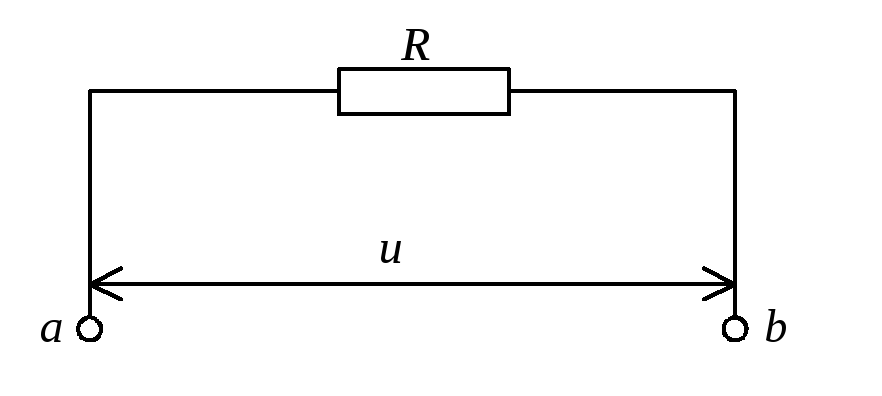
 Fig.2. Storm deposit through a resistor
Fig.2. Storm deposit through a resistor

